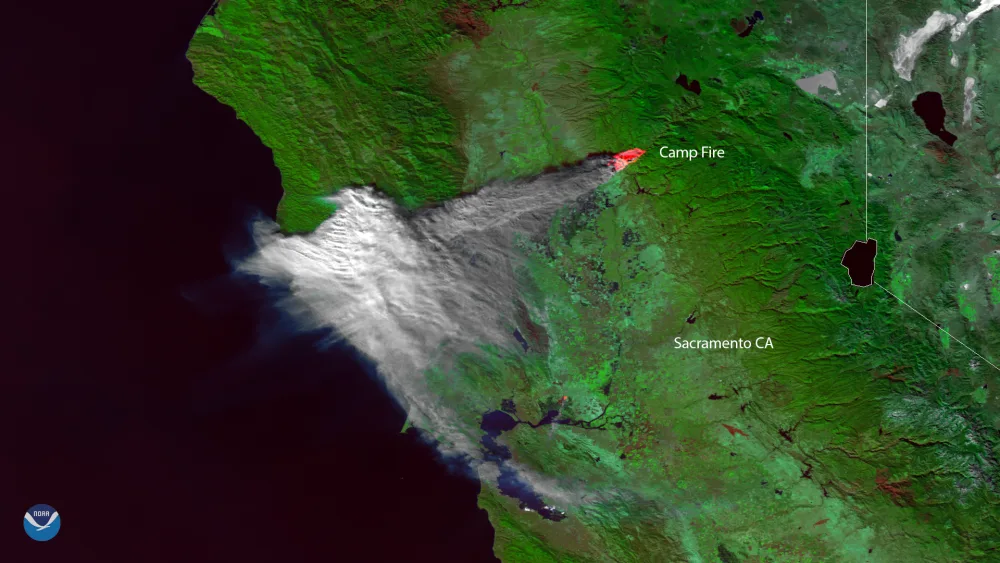
California braces for what could be significant wildfire season
Early indications are that the latter part of the Golden State's fire season will be one to reckon with.
In recent years, Californians have seen more ferocious wildfires affecting their state -- a scenario experts have been warning about for quite some time. Despite the very wet winter experienced across many areas of the state, which helped with the recovery from a multi-year drought, experts are warning that this could be another late summer and fall to remember in terms of wildfire action.
As a result of the ground being wetter than in previous years, vegetation has become abundant in many parts of the Golden State. That, combined with intense heat, dry air and strong winds, will increase the risk of wildfires in the coming weeks.
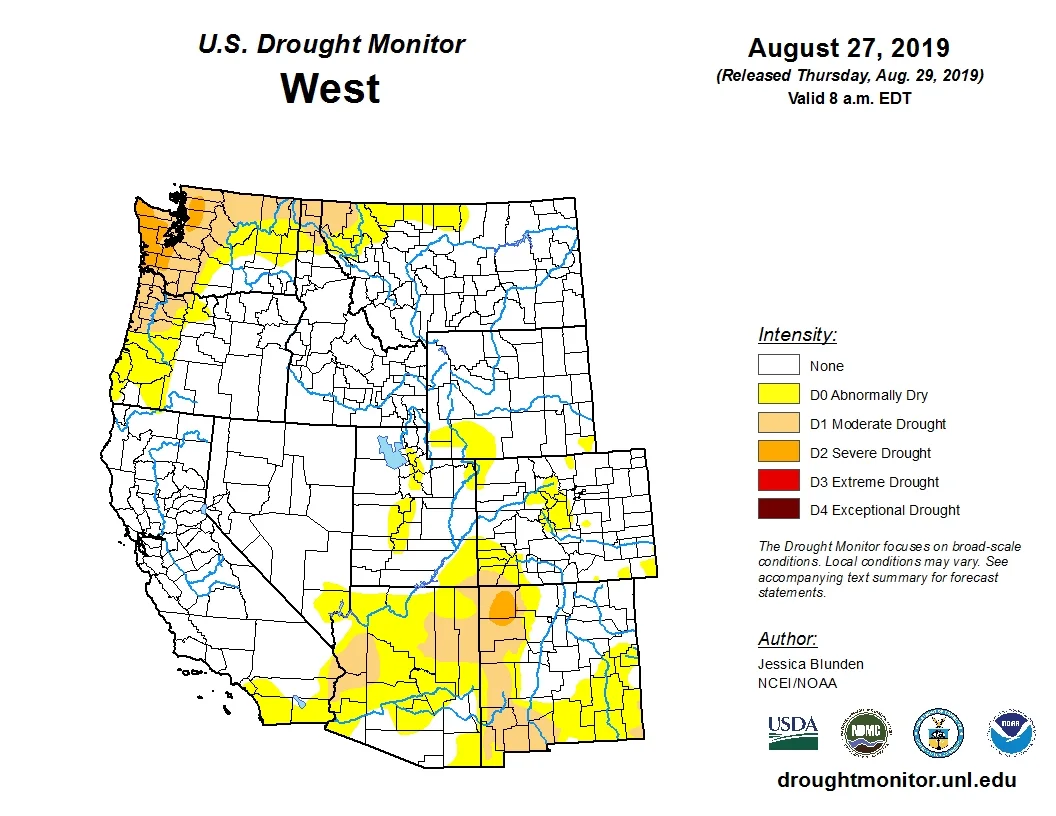
California experiences two distinct fire periods -- a summer season (where fires are mainly heat-driven) and a fall season (where winds usually fuel the fires). During August and part of September, wildfire high-risk zones tend to extend into the inland valleys and foothills, mainly in the northern part of the state. From October on, wildfires in California tend to extend along the coast and into the mountains.
Summer 2019 was off to a slow start, mainly because temperatures were cooler than average in many areas. In late July, one of the strongest heat waves of the season brought temperatures from the mid-30°C to the low 40°C mark across interior areas of the Los Angeles basin. Firefighters had to fight blazes spreading from Los Angeles to Santa Barbara and north to Monterrey and Big Sur. Then came the largest fire of the year so far in the state, the Tucker fire, which scorched 2,300 hectares in northern California’s Modoc County.
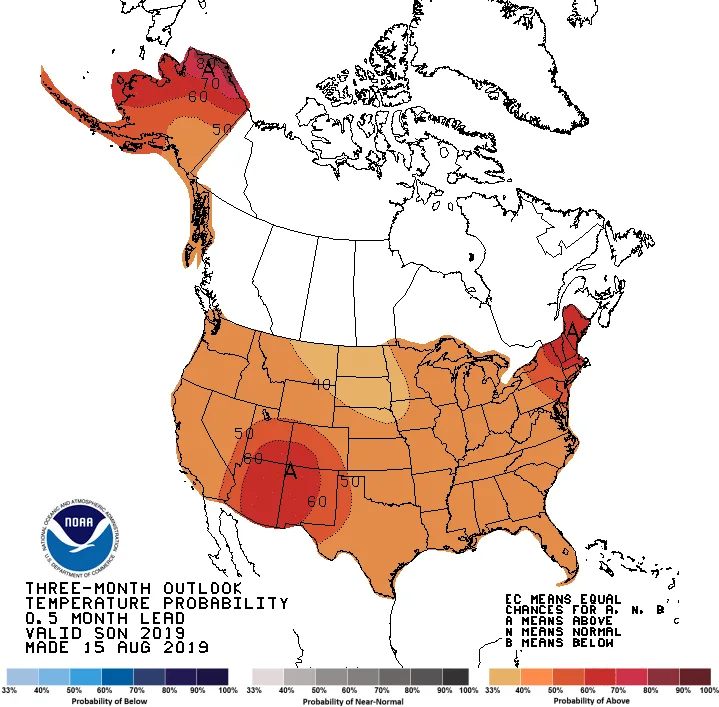
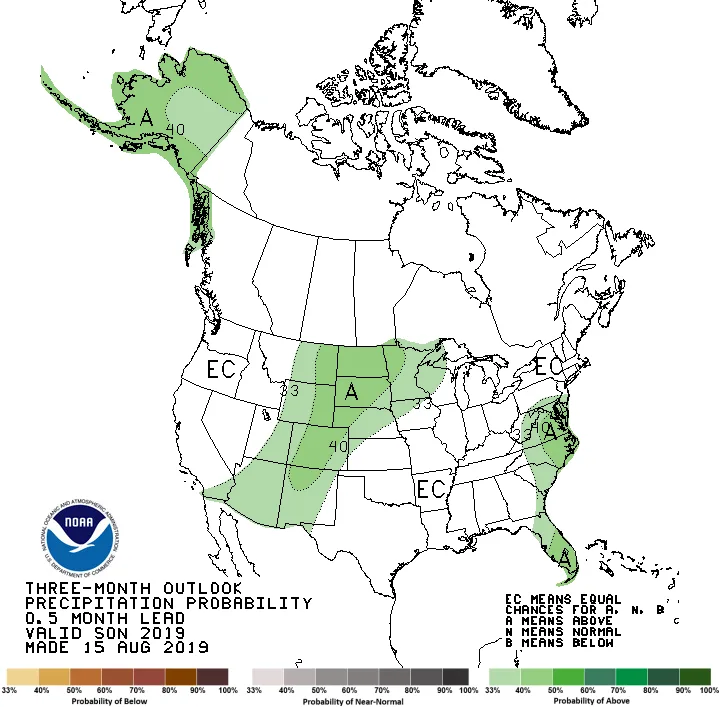
September, October, November temperature and precipitation forecasts. Source: NOAA
ABOVE-AVERAGE FIRE SEASON AHEAD
Climate outlooks point towards an above-average wildfire season in California, and other western states like Oregon, Washington and Alaska. The probability of experiencing warmer temperatures during the months of September, October and November is above-normal across much of the country, but especially for the Southern Rockies and Alaska in the west.
Additionally, however, Alaska and the Rockies are both expected to see above-normal precipitation. California will remain average, but being the end of the dry season across much of the state, they should see little or no precipitation in many areas.
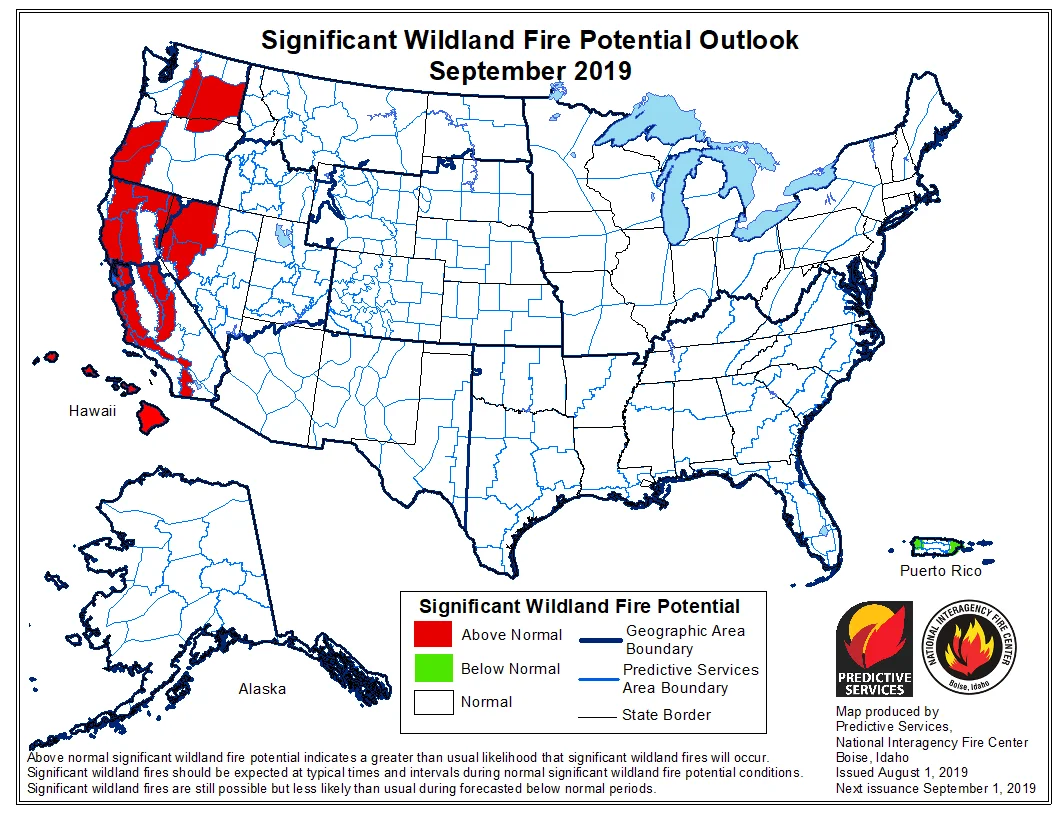

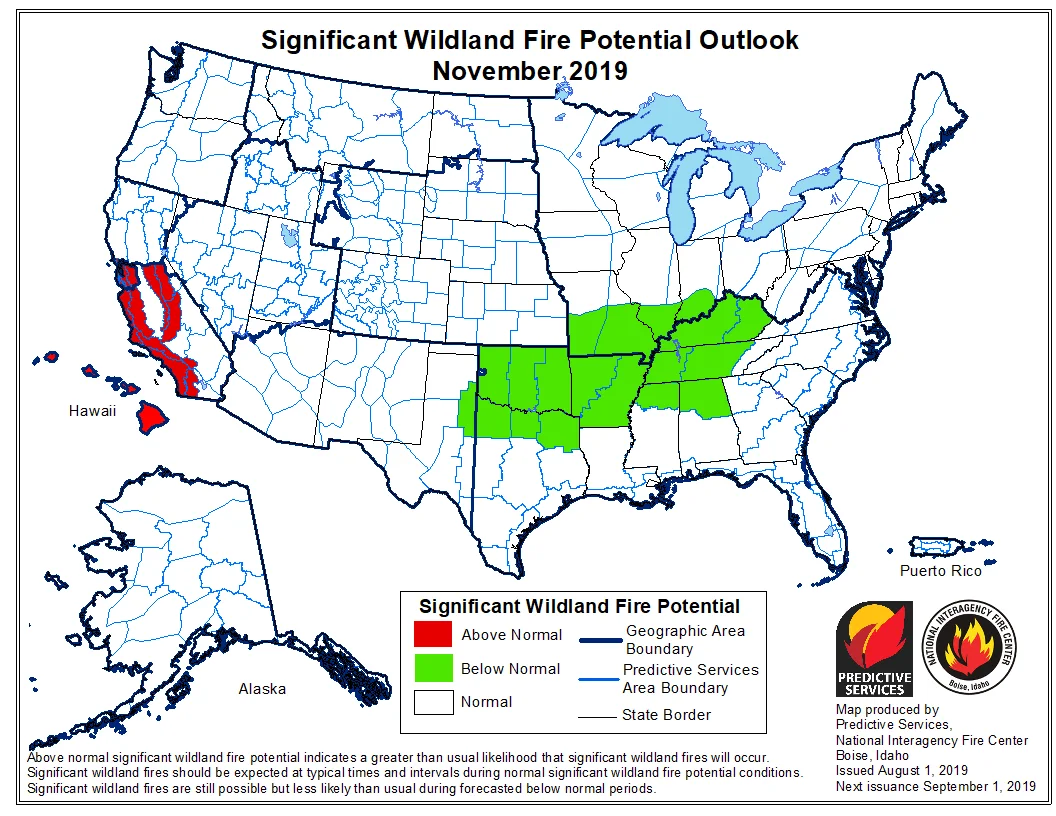
U.S. Wildfire Forecast September, October, November
Fire potential outlooks based on the aforementioned factors have been consistent about limiting forest fires in the higher elevations. A generous winter and spring have kept ground moisture levels high enough to suppress summer forest fires in the high Sierra Nevadas. Some experts claim that although we will see big fires -- the ones that make the news -- the season should not be as extreme as that of 2018.
The start of this summer fire season was slow, very different from what we saw last summer. However, the vegetation drying rate seems to be accelerating during this last stretch of summer, and shrubs are contributing more to recent fires than during the past summer weeks.
IMPACTS OF CLIMATE CHANGE
According to experts, California’s most notable recent fires, like the Camp, Woolsey, Carr and Thomas, have behaved differently than other fires seen in recent years across the west. Climate change may be modifying these new wildfires, but it is not the only element contributing to the extreme fire scenario the state has been experiencing lately. People are increasingly building in “risky” areas and forest management in some cases has allowed tree strands to grow denser than desired.
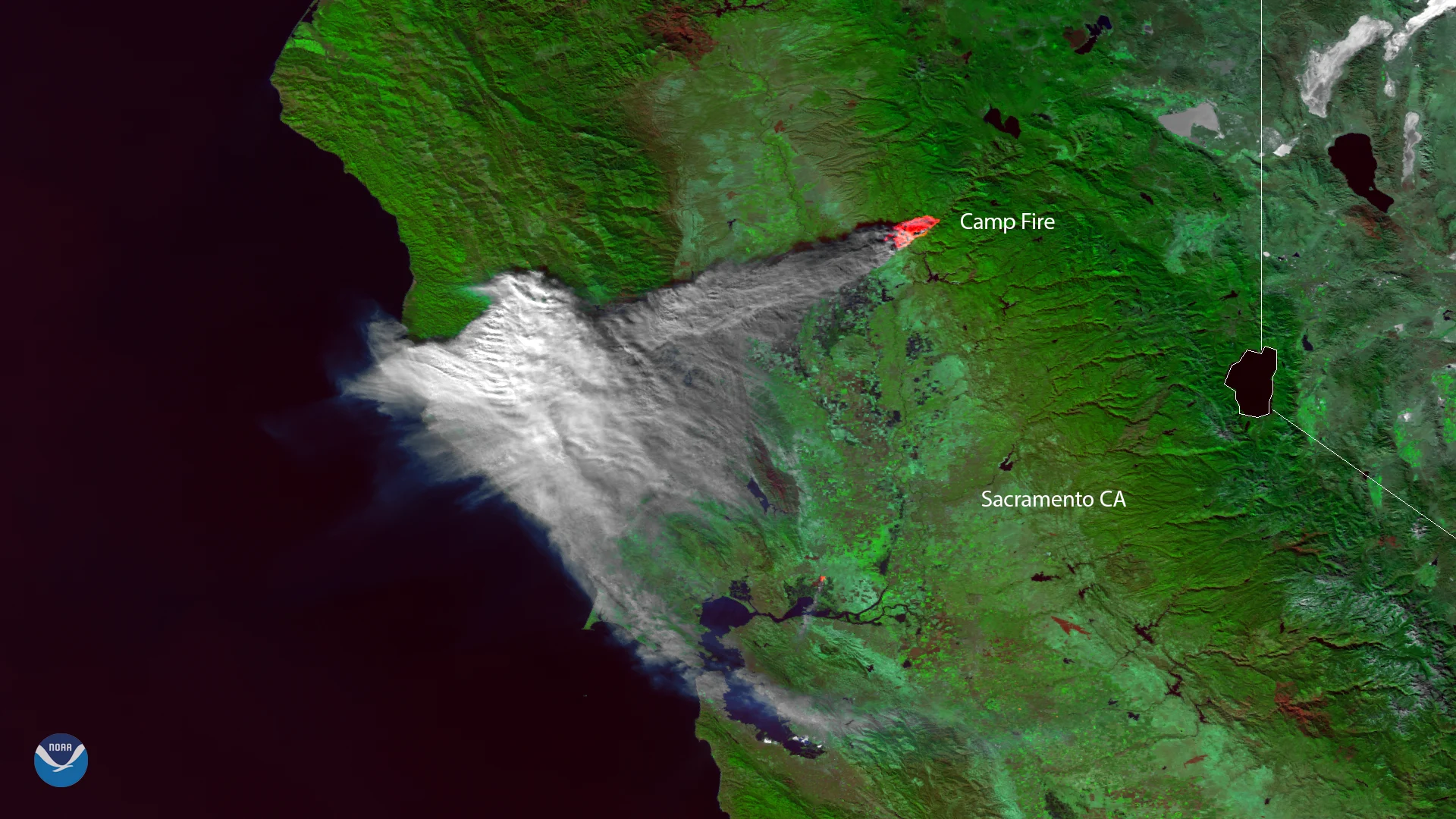
2018's Camp Fire is depicted in this satellite image.
There are quite a few factors to keep in mind regarding the future scenario of California wildfires.
The majority of climate change forecasts suggest that in the future, there will be less rain in some areas of California during the fall months and more rain in December and January. This could translate into fires extending later into the fall months, greatly extending the fire risk season.
According to Dr. Alex Hall a professor in the UCLA Atmospheric and Oceanic Sciences Department, climate change may even affect California fires in other ways.
Dry, intense Santa Ana and Diablo winds, which favour rapid wildfire growth and movement, could become a bigger problem in years to come, says Dr. Hall. In the future, these regional winds should become drier as the planet warms because warmer air over the high desert of Utah and Nevada has lower relative humidity and will become drier still as it descends into California.
Drier air would mean more desiccation and a greater fire risk across much of the region.












